Home> Company News> The Vintage Sound of 1946 Martin Acoustic Guitars
- AddressShan Dong Province Weifang City
- Factory AddressShan Dong Province Weifang City
- Worktime9:00am~6:00pm
- Phone(Working Time)+8613305315989
- Phone(Nonworking Time)+8613305315989
The Vintage Sound of 1946 Martin Acoustic Guitars
2023-05-06 14:27:17The year 1946 marks an important milestone in the history of Martin acoustic guitars. It was during this year that the company resumed its guitar production after a hiatus during World War II. The 1946 Martin acoustic guitars are regarded as some of the most important instruments ever produced by the company. These guitars represent a significant moment in Martin's history, as they marked the beginning of a new era for the company, a time of rebuilding and renewed creativity.
The 1946 Martin guitar were notable for their exceptional craftsmanship and attention to detail. The company's skilled luthiers, who had been honing their craft for decades, worked tirelessly to produce instruments that were not only beautiful to look at but also produced a rich, warm sound that would become the hallmark of Martin guitars.
One of the most significant contributions of the 1946 Martin acoustic guitars was the introduction of a new bracing pattern. The X-bracing system, developed by Martin's master luthier, C.F. Martin III, significantly improved the sound and projection of the guitars. The X-bracing system created a sturdier structure that allowed the top of the guitar to vibrate more freely, resulting in a richer, more resonant tone.
The 1946 Martin acoustic guitars also featured other improvements, such as a larger body size and a scalloped bracing system that contributed to their rich, warm sound. The guitars were made from high-quality materials, including solid spruce tops and solid mahogany backs and sides, and were constructed with meticulous attention to detail.
These guitars quickly gained a reputation for their exceptional tone and became popular among professional musicians and serious enthusiasts. The 1946 Martin acoustic guitars were used by some of the most influential musicians of the time, including Elvis Presley, Bob Dylan, and Johnny Cash.
The legacy of the 1946 Martin acoustic guitars continues to this day. They are revered by guitar players around the world for their exceptional tone, craftsmanship, and historical significance. While many of these guitars are now highly sought after and difficult to find, they remain an important part of Martin's legacy and a testament to the company's commitment to excellence.
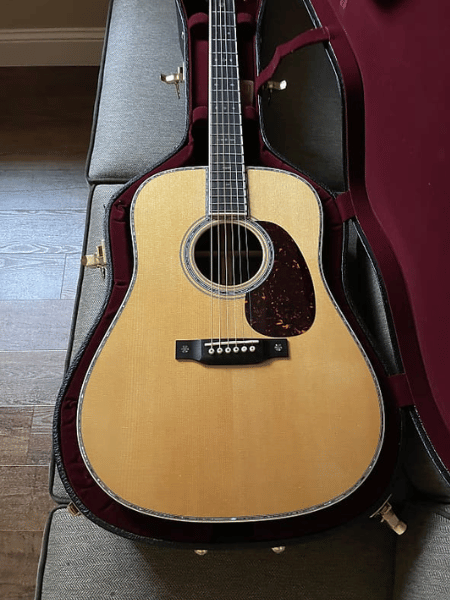
Unearthing the Secrets of the Classic Sound of 1946 Martin Acoustic Guitars
In the world of acoustic guitars, few are as renowned as the 1946 Martin guitar. Among the various models produced by Martin, the 1946 Martin acoustic guitars hold a special place in the hearts of musicians and guitar enthusiasts alike. The reason behind this is the unique and timeless sound that these guitars produce.
The 1946 Martin acoustic guitars have a classic sound that is unmistakable. This sound is the result of a combination of various factors that are unique to these guitars. Let's take a closer look at some of these factors.
One of the main factors that contribute to the sound of the 1946 Martin acoustic guitars is the type of wood used in their construction. The body of these guitars is made of solid spruce, which is a tonewood that has been used by Martin since the company's inception. Spruce is known for its tonal qualities, such as its ability to produce clear, bright, and articulate tones.
Another key factor in the sound of these guitars is the back and sides, which are made of solid mahogany. Mahogany is a tonewood that is known for its warm, rich, and resonant tone. The combination of spruce and mahogany gives the 1946 Martin acoustic guitars a balanced and harmonious sound.
The bracing system used in the construction of these guitars is also crucial to their sound. The X-bracing system used in these guitars is a modification of the bracing system that Martin had been using since the 1800s. This modification was made to improve the volume and projection of the guitar's sound.
The neck of the 1946 Martin acoustic guitars is also an important factor in their sound. The neck is made of mahogany and is attached to the body using a dovetail joint. This joint provides a solid connection between the neck and body, which enhances the transfer of vibrations from the strings to the body.
The fretboard and bridge of these guitars are made of ebony, which is a tonewood that is known for its clarity and sustain. Ebony is also a durable wood that can withstand the wear and tear of heavy playing.
In conclusion, the sound of the 1946 Martin acoustic guitars is the result of a combination of various factors. These factors include the use of solid spruce and mahogany for the body, the X-bracing system, the dovetail neck joint, and the use of ebony for the fretboard and bridge. It is these factors that give the 1946 Martin acoustic guitars their unique and timeless sound that has made them a favorite among musicians for generations.
What Makes 1946 Martin Acoustic Guitars a Favorite Amongst Musicians?
1946 Martin acoustic guitars are a favorite amongst musicians for many reasons. One of the most significant reasons is their unique sound and tone, which is characterized by warmth, clarity, and balance. The tone of 1946 Martin acoustic guitars is often described as "vintage" or "old-school," which is highly desirable among musicians who value classic, timeless sounds.
The high-quality materials used in the construction of 1946 Martin acoustic guitars also contribute to their popularity. These guitars were crafted using the finest woods available, such as Sitka spruce for the top, and mahogany for the back and sides. These materials, combined with expert craftsmanship, create a guitar that is both beautiful and durable.
Another reason why 1946 Martin acoustic guitars are so popular is their historical significance. These guitars were produced in the post-World War II era, a time when the world was recovering from the effects of war and music was becoming an important part of people's lives. The Martin guitar company played a significant role in this era by producing some of the most iconic guitars of all time, including the 1946 models.
Finally, 1946 Martin acoustic guitars are favored among musicians because of their playability. The necks are comfortable and easy to play, and the guitars have a well-balanced feel that makes them ideal for both fingerstyle and strumming techniques. The combination of playability, tonal quality, and historical significance make 1946 Martin acoustic guitars a favorite among musicians of all genres and skill levels.
A Closer Look at the Specifications of 1946 Martin Acoustic Guitars
When it comes to acoustic guitars, specifications are an important factor to consider. They can tell us a lot about the guitar's construction, materials, and overall quality. This is certainly true for 1946 Martin acoustic guitars, which are known for their exceptional craftsmanship and sound quality.
Body Shape and Size: The 1946 Martin acoustic guitars typically have a dreadnought body shape, which is known for its powerful and full-bodied sound. The body size of these guitars is also larger than other models, making them ideal for players who want a big, bold sound.
Top Wood: The top wood of a 1946 Martin acoustic guitar is usually made of Sitka spruce, which is known for its durability and resonance. The top wood is an important component of an acoustic guitar as it has a significant impact on the guitar's overall tone and sound.
Back and Sides: The back and sides of 1946 Martin acoustic guitars are usually made of high-quality Indian rosewood. This wood is known for its rich, warm tones and is often used in high-end acoustic guitars. The back and sides of the guitar are important as they contribute to the guitar's overall tonal quality.
Neck: The neck of a 1946 Martin acoustic guitar is made of mahogany and has a scale length of 25.4 inches. The neck is an important component of an acoustic guitar as it affects playability and tone. The scale length of a guitar refers to the distance between the nut and the bridge, and can affect the guitar's string tension and overall feel.
Fingerboard and Frets: The fingerboard of a 1946 Martin acoustic guitar is made of ebony, a hard, dense wood that is known for its durability and tonal clarity. The guitar typically has 20 frets, which are made of nickel silver. The frets play an important role in the guitar's playability and tone, as they affect intonation and overall feel.
Bridge and Saddle: The bridge of a 1946 Martin acoustic guitar is typically made of ebony, which is known for its tonal clarity and durability. The saddle is made of bone, a material that is often used in high-end acoustic guitars for its tonal qualities.
Finish: The finish of a 1946 Martin acoustic guitar is typically a high-gloss nitrocellulose lacquer. This finish is known for its durability and ability to enhance the guitar's natural tonal qualities.
In conclusion, the specifications of a 1946 Martin acoustic guitar are what make it such a unique and exceptional instrument. From the body shape and size to the choice of woods and finish, each component is carefully crafted to create a guitar with a powerful and full-bodied sound that has stood the test of time.
Investing in a 1946 Martin Acoustic Guitar: A Wise Choice for Music Enthusiasts
1946 Martin acoustic guitars are highly sought after by guitar enthusiasts and collectors alike. Due to their rarity, historical significance, and excellent sound quality, investing in a 1946 Martin acoustic guitar is a wise choice for anyone passionate about music.
The value of 1946 Martin acoustic guitars has increased steadily over the years, making them a solid investment for those looking to build a collection of high-quality instruments. Additionally, the limited supply of these guitars, combined with their growing popularity, means that their value is likely to continue to rise in the future.
But beyond their monetary value, 1946 Martin acoustic guitars are also valued for their exceptional sound quality. Martin guitars have been known for their superior craftsmanship and sound since the company was founded in 1833, and the 1946 models are no exception. The combination of high-quality tonewoods, skilled craftsmanship, and meticulous attention to detail results in a warm, balanced tone that is highly sought after by musicians of all genres.
Investing in a 1946 Martin acoustic guitar is not just a financial decision, it is also a decision to own a piece of history. The 1946 models were produced in the immediate post-World War II era, which was a time of great change and transformation in the world of music. The guitars produced during this time reflect the spirit of innovation and creativity that characterized the era, and owning one of these guitars is like owning a piece of that history.
When considering purchasing a 1946 Martin acoustic guitar, it is important to do your research and ensure that you are getting an authentic instrument. There are many counterfeit guitars on the market, and it is important to verify the authenticity of any potential purchase before making a significant investment.
One way to ensure the authenticity of a 1946 Martin acoustic guitar is to purchase from a reputable dealer or collector. Many collectors specialize in vintage Martin guitars and can provide documentation of the guitar's authenticity and history. It is also important to inspect the guitar thoroughly and look for any signs of wear or damage that could affect its value.
In addition to purchasing from a reputable dealer, it is also wise to have the guitar appraised by a professional appraiser. This will give you an idea of the guitar's current value and help you make an informed decision about whether or not to purchase.
In conclusion, investing in a 1946 Martin acoustic guitar is a wise choice for anyone passionate about music and interested in owning a piece of history. With their exceptional sound quality, rarity, and historical significance, these guitars are highly valued by musicians and collectors alike. However, it is important to do your research and ensure the authenticity of any potential purchase before making a significant investment.
Restoring and Preserving 1946 Martin Acoustic Guitars: Tips and Tricks
As with any vintage musical instrument, owning a 1946 Martin acoustic guitar comes with the responsibility of proper maintenance and care. Restoring and preserving a vintage guitar requires delicate handling and knowledge of proper techniques to ensure the guitar stays in pristine condition. In this section, we will explore some tips and tricks for restoring and preserving 1946 Martin acoustic guitars.
-
Inspection and Assessment Before attempting to restore or preserve a 1946 Martin acoustic guitar, it is essential to inspect and assess the guitar's condition thoroughly. A professional luthier should handle this task to ensure that no damage is done during the assessment. The luthier will evaluate the guitar's structural integrity, including its neck, bridge, top, and back. The assessment will identify any cracks, warps, or other damage that may require repair. The luthier will also examine the guitar's finish, checking for any signs of wear, cracks, or flaking. Once the luthier has assessed the guitar's condition, they will determine the appropriate steps to restore and preserve the guitar.
-
Cleaning Cleaning a 1946 Martin acoustic guitar is an essential part of preserving its original condition. However, the process should be done with care to prevent damaging the guitar's finish or any other component. It is crucial to use only high-quality guitar cleaning products, including specific guitar polishes, waxes, and cleaners. Avoid using household cleaning products, which may contain harsh chemicals that can harm the guitar's finish. When cleaning the guitar, use a soft, lint-free cloth and be gentle, using light circular motions to remove dirt, dust, and grime.
-
String Replacement Replacing the strings on a 1946 Martin acoustic guitar is essential for preserving its sound quality. Old strings can cause intonation issues and a dull tone. When replacing the strings, use only high-quality strings designed for acoustic guitars. It is also essential to change the strings one at a time, so as not to release the tension on the guitar's neck suddenly. This can cause the guitar's neck to warp or crack, leading to more significant damage.
-
Humidity Control Humidity control is crucial for preserving the condition of a 1946 Martin acoustic guitar. The ideal humidity range for a guitar is between 40% to 60%. Anything outside this range can cause the guitar to expand or contract, leading to structural damage. Investing in a humidifier or dehumidifier, depending on your climate, can help maintain the proper humidity levels for your guitar.
-
Regular Maintenance Regular maintenance is crucial for preserving the condition of a 1946 Martin acoustic guitar. It is essential to store the guitar properly in a hardshell case when not in use. When transporting the guitar, use a padded case or gig bag to protect it from bumps and scratches. Regularly inspect the guitar for any signs of damage or wear, and have it professionally serviced if necessary.
Conclusion Restoring and preserving a 1946 Martin acoustic guitar is a rewarding experience for any guitar enthusiast. However, it requires care and attention to detail to maintain the guitar's original condition. With the tips and tricks outlined above, you can ensure that your 1946 Martin acoustic guitar stays in excellent condition and continues to produce the beautiful sound that made it a classic in the world of music.
The Evolution of Martin Acoustic Guitars: A Historical Review of 1946 Models
The Martin Guitar Company has been at the forefront of the acoustic guitar industry for over a century, and 1946 marked a significant milestone in the company's history. This was the year that Martin introduced several new models that would come to define the company's sound and influence the music industry for years to come.
One of the most iconic models introduced in 1946 was the Martin D-18, which quickly became a favorite of musicians and collectors alike. The D-18 was designed with a spruce top and mahogany back and sides, creating a warm and balanced sound that was perfect for a variety of playing styles.
Another popular model introduced in 1946 was the Martin D-28, which is often considered one of the finest acoustic guitars ever made. The D-28 featured a solid spruce top, solid rosewood back and sides, and a mahogany neck, which contributed to its rich and complex tone. The D-28 was favored by many legendary musicians, including Hank Williams, Joni Mitchell, and Elvis Presley.
In addition to the D-18 and D-28, Martin also introduced the 00-18, 000-18, and 000-28 models in 1946. These models were smaller than the D-series guitars, but they still packed a punch with their bright and clear sound. The 00-18 and 000-18 had mahogany back and sides, while the 000-28 featured rosewood back and sides.
The 1946 Martin guitars were highly sought after for their craftsmanship, sound quality, and playability. The guitars were built with a combination of traditional hand-crafting techniques and modern machinery, which allowed Martin to produce high-quality instruments at a faster pace than ever before.
The legacy of the 1946 Martin acoustic guitars lives on today, as these models continue to be popular among musicians and collectors alike. The sound and feel of these guitars are often described as unparalleled, and they remain a testament to the dedication and skill of the Martin Guitar Company.
In conclusion, the 1946 Martin acoustic guitars were a pivotal moment in the history of Martin and the acoustic guitar industry as a whole. The D-18 and D-28 models, in particular, have become legendary instruments that have influenced countless musicians over the years. Whether you are a professional musician or a collector, a 1946 Martin guitar is a valuable and worthwhile investment that is sure to provide years of enjoyment and inspiration.
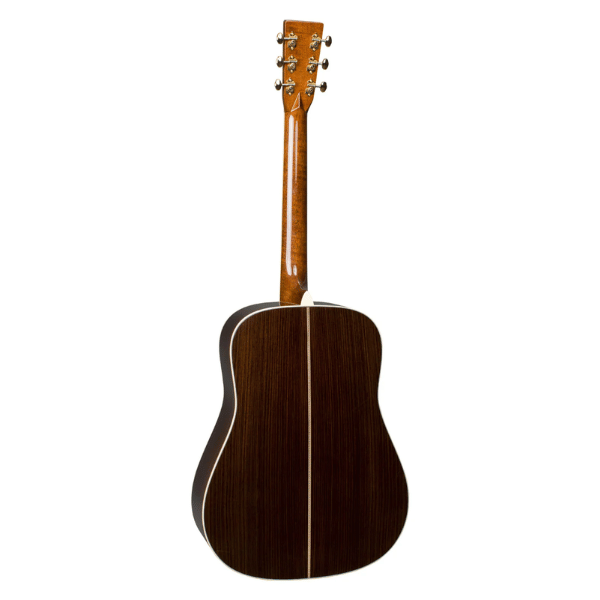
Exploring the Unique Characteristics of 1946 Martin Acoustic Guitars
1946 Martin acoustic guitars are known for their unique characteristics that have made them a favorite amongst musicians and collectors alike. These guitars were manufactured during an important period in the history of the Martin company, and the craftsmanship and attention to detail that went into their creation is evident in the sound and feel of the instruments. In this article, we will explore the unique characteristics of 1946 Martin acoustic guitars and what sets them apart from other instruments.
One of the most notable features of 1946 Martin acoustic guitars is their sound quality. These instruments are known for their warm, rich tone and excellent projection. The sound of a 1946 Martin acoustic guitar is unmistakable and has been sought after by musicians for decades. This is due in part to the high-quality materials used in their construction. The solid wood construction of these guitars, combined with the craftsmanship and attention to detail that went into their creation, produces a unique and beautiful sound.
Another unique characteristic of 1946 Martin acoustic guitars is their visual appeal. These instruments are often praised for their beauty and elegance, with their classic design and beautiful wood grain patterns. The attention to detail that went into the creation of these instruments is evident in their appearance, with intricate inlay work and other decorative features that add to their visual appeal.
The playability of 1946 Martin acoustic guitars is also noteworthy. These instruments are designed to be played comfortably for long periods, with a well-balanced weight and comfortable neck shape that make them easy to play. They are also known for their excellent intonation and tuning stability, which allows musicians to play with confidence and accuracy.
One of the reasons that 1946 Martin acoustic guitars are so highly regarded is the history and legacy behind them. These instruments were manufactured during an important period in the Martin company's history, and they represent a significant chapter in the evolution of acoustic guitars. Owning a 1946 Martin acoustic guitar is not just a purchase of a beautiful instrument, but also a piece of musical history.
In conclusion, the unique characteristics of 1946 Martin acoustic guitars make them a sought-after instrument among musicians and collectors. Their sound quality, visual appeal, playability, and historical significance set them apart from other instruments and make them a valuable addition to any collection. Whether you are a musician looking for a high-quality instrument or a collector looking for a piece of musical history, a 1946 Martin acoustic guitar is a sound investment that will provide enjoyment for years to come.
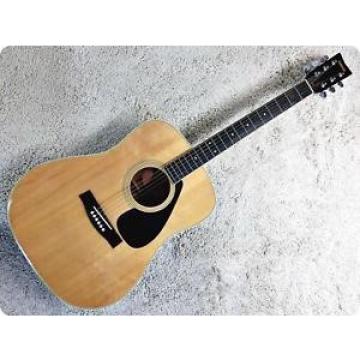 YAMAHA martin guitar strings acoustic medium FG-201B martin guitar accessories Japan martin Vintage acoustic guitar strings martin Acoustic martin acoustic guitars Guitar AG40 W40 GA057 RARE
YAMAHA martin guitar strings acoustic medium FG-201B martin guitar accessories Japan martin Vintage acoustic guitar strings martin Acoustic martin acoustic guitars Guitar AG40 W40 GA057 RARE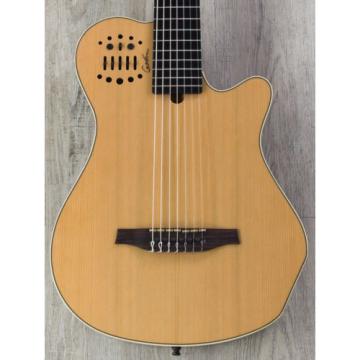 Godin acoustic guitar martin MultiAc martin guitar accessories Grand dreadnought acoustic guitar Concert martin guitar strings 7 martin d45 SA Acoustic-Electric 7-String Guitar, Natural
Godin acoustic guitar martin MultiAc martin guitar accessories Grand dreadnought acoustic guitar Concert martin guitar strings 7 martin d45 SA Acoustic-Electric 7-String Guitar, Natural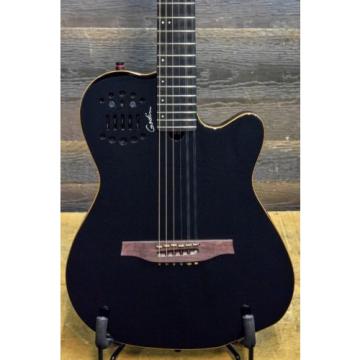 Godin acoustic guitar martin A10 guitar strings martin Black martin guitar accessories Steel martin d45 HG martin guitar strings acoustic medium "SF" 10-String SA El.-Acoustic Guitar w/ Bag #13342127
Godin acoustic guitar martin A10 guitar strings martin Black martin guitar accessories Steel martin d45 HG martin guitar strings acoustic medium "SF" 10-String SA El.-Acoustic Guitar w/ Bag #13342127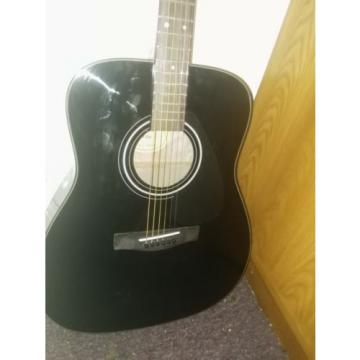 Yamaha martin d45 Acoustic martin guitar strings acoustic medium Guitar acoustic guitar martin martin guitars martin acoustic guitars
Yamaha martin d45 Acoustic martin guitar strings acoustic medium Guitar acoustic guitar martin martin guitars martin acoustic guitars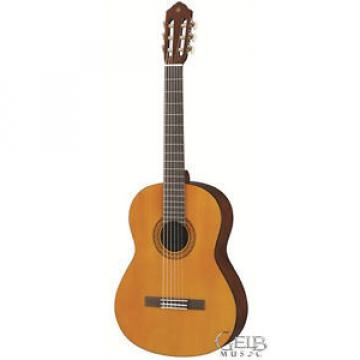 Yamaha acoustic guitar strings martin C40II martin d45 Classical martin guitar strings acoustic medium Acoustic martin acoustic strings Guitar dreadnought acoustic guitar - C40II
Yamaha acoustic guitar strings martin C40II martin d45 Classical martin guitar strings acoustic medium Acoustic martin acoustic strings Guitar dreadnought acoustic guitar - C40II
